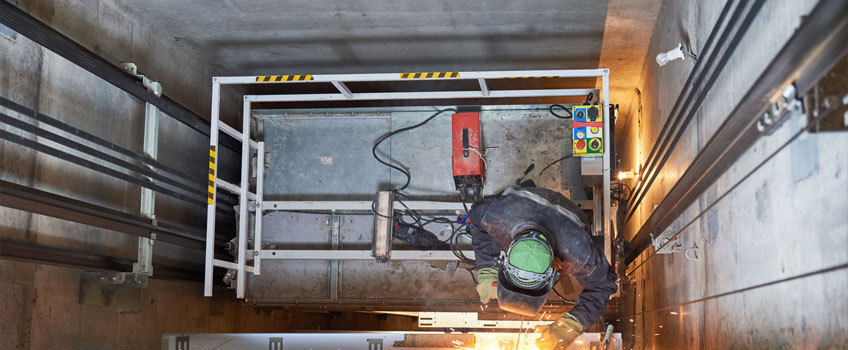Comprehensive Guide to Elevator Solutions and Their Maintenance
Navigating the intricate globe of elevator systems and their maintenance is a task that demands accuracy and understanding. From the numerous kinds of elevator systems in use to the careful adherence to security laws, the maintenance of these vertical transportation devices is a diverse venture.
Sorts Of Lift Systems
The most usual types include hydraulic elevators, traction elevators, machine-room-less lifts, and vacuum cleaner lifts. Hydraulic lifts are suitable for low-rise buildings and use a hydraulic piston to relocate the elevator auto. Machine-room-less elevators are a space-saving choice as they do not need a different machine room for the elevator machinery.
Each kind of elevator system has its own benefits and negative aspects, making it essential for structure proprietors and developers to very carefully consider their specific demands prior to picking one of the most appropriate choice. Variables such as building height, room availability, power efficiency, and spending plan constraints all play a considerable role in identifying the finest lift system for a particular building.
Common Maintenance Concerns
Normal maintenance of lift systems is vital to make sure smooth operation and extend their life expectancy. Despite normal maintenance, lift systems can still encounter usual maintenance issues that require to be without delay resolved to prevent disturbances in solution. Normal assessments and aggressive maintenance can help determine and fix these typical upkeep problems prior to they intensify and influence the overall performance of the elevator system.
Safety Laws and Conformity
Sticking to rigid safety regulations and ensuring compliance with market standards are critical for preserving the operational integrity of lift systems. Lifts go through a detailed set of security guidelines to secure travelers, maintenance personnel, and the public. Regulative bodies such as the Occupational Safety And Security and Health Management (OSHA) in the United States and the European Lift Organization (ELA) in Europe develop guidelines that cover various elements of lift design, upkeep, installation, and operation.
Conformity with these policies is not just a legal requirement but additionally a moral obligation for structure proprietors and elevator upkeep imp source business. Routine examinations, upkeep checks, and adherence to safety and security procedures detailed in the laws are essential to guarantee the effective and risk-free operation of lift systems.
Ideal Practices for Maintenance

Building owners must likewise take into consideration spending in modernization upgrades to boost the efficiency and security of their lift systems. By complying with these best methods, elevator systems can operate smoothly and securely, providing trusted vertical transport for occupants.

Advanced Technologies for Performance
Applying advanced innovations in elevator systems can dramatically boost operational efficiency and traveler experience. lift maintenance company. One of the essential advancements in elevator innovation is the intro of destination control systems. These systems permit travelers to input their wanted floor prior to going into the elevator, which then routes click here for more them to the most efficient auto. By enhancing and decreasing unnecessary quits traveling paths, destination control systems lower wait times and congestion in high-traffic buildings.
In addition, the combination of smart sensors and anticipating upkeep capabilities has reinvented lift upkeep. These sensing units can discover prospective problems prior to they escalate, allowing positive upkeep treatments and lessening downtime. Additionally, the usage of regenerative drives and energy-efficient components assists minimize power consumption and operating expense in lift systems.
Moreover, the execution of cloud-based surveillance and remote diagnostics permits real-time monitoring of lift performance and immediate troubleshooting of any breakdowns. This aggressive technique not only enhances system dependability but likewise enhances the total customer experience by ensuring undisturbed and smooth elevator operations.
Conclusion
Finally, comprehending the different Homepage types of elevator systems, usual maintenance concerns, security guidelines, finest maintenance methods, and progressed technologies for effectiveness is crucial for ensuring the smooth procedure of lifts. By adhering to security regulations and carrying out best practices for maintenance, building owners can extend the life expectancy of their elevator systems and make sure the safety of passengers. It is important to remain updated on the most recent advancements in lift modern technology to enhance efficiency and integrity.
The most common kinds consist of hydraulic elevators, grip lifts, machine-room-less lifts, and vacuum elevators. Hydraulic elevators are perfect for low-rise buildings and utilize a hydraulic piston to relocate the lift cars and truck. Machine-room-less elevators are a space-saving choice as they do not need a different maker room for the lift equipment. Normal assessments and positive maintenance can aid recognize and settle these usual upkeep problems prior to they escalate and influence the general performance of the elevator system.
